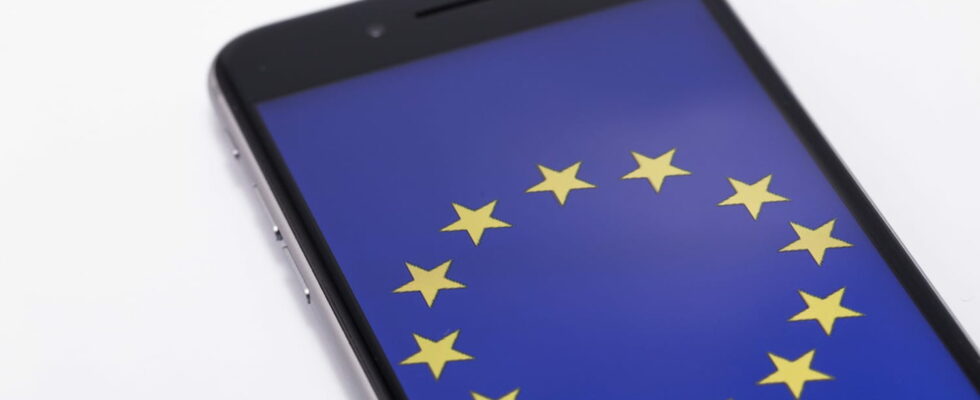Europe has just defined a standard for the digital identity wallet. Called EU Digital Identify Wallets, it will allow all official documents to be stored on a smartphone without using American GAFAM solutions.
As our society becomes more and more connected and state administrative services become ever more digital, the European Union has been seeking for several years now to set up a European digital identity wallet, in which each citizen could store their identity documents (identity card, license, etc.) and access public and private online services throughout Europe. To put it simply, it would be a sort of European equivalent to France Identity, Google Wallet and Apple Pay.
At the beginning of November, things accelerated since the three main bodies of the EU, namely the European Commission, the European Parliament and the Council of Europe, reached an agreement to implement this new system. Finally, on November 28, 2024, the European Commission announced to have “adopted today rules for the core functionality and certification of European digital identity wallets under the European Digital Identity Framework”. This new standard will be called EU Digital Identify Wallets (eID). Thanks to it, European citizens will be able to prove their identity and communicate electronic documents from their mobile phone. This system must rely on already existing national solutions, such as France Identity, by making them interoperable. A most ambitious project… Perhaps too much?
EU Digital Identify Wallets: what will the digital wallet be used for?
The digital identity wallet is much more than just a file containing different documents. On his websitethe European Commission lists a multitude of uses for its application. It could in particular bring together:
- A digital version of the driving license;
- Access to public services (across the EU) by identifying yourself;
- Contactless payment cards;
- A service to open a bank account by verifying your identity;
- Access to school and academic diplomas;
- The integration of health cards (Carte Vitale, European health insurance card, etc.);
- Health prescriptions;
- The creation of a new prepaid SIM card;
- Reserving hotels, train or plane tickets;
- Signing contracts;
- The possibility of generating certificates to prove that you are a representative of an organization.
In addition, it will allow citizens of the Old Continent to free themselves from identification on the major digital platforms listed by the DSA, such as Apple, Google, Amazon or Facebook, often required to access certain services. The digital giants will have no choice but to comply with the protocol put in place by the European Union. “Private services that are legally required to authenticate their users will have to accept the EU digital identity wallet to connect to their online services”explains the Council of the EU. However, it does not seem possible to store passwords.
EU Digital Identify Wallets: what standard for the digital wallet?
Contrary to what one might believe, the European Union does not want to develop a single application. It only sets up a standardthat is to say a set of rules concerning “uniform standards, specifications and procedures for technical functionalities of wallets, such as data formats required for the cross-border use of digital documents and measures to ensure the reliability and security of wallets. However, it will be every Member State to develop its own application.
There is therefore a strong chance that France will retain France Idabilité, which already hosts the identity card and driving license for French people – and the Vitale card by 2025. It could also adopt the standard for France Connect, its secure authentication service. Finally, it will only have to comply with European standards, so that the virtual identity cards are readable in Germany or Portugal for example.
At the beginning of the month, Spanish Economy Minister Nadia Calviño welcomed the latest measures taken: “This is an essential step forward for the European Union to become a global reference in the digital field, protecting our rights and our democratic values”.
EU Digital Identify Wallets: what about data security?
However, some fears have been expressed regarding data privacy, especially since the digital wallet will not only allow payments, but also keep track of all transactions, and even interact with other wallets. The European Union wants to be reassuring on this subject. “The wallet will fully respect the user’s choice whether or not to share their personal data. It will offer the highest degree of security independently certified according to the same standards, and the relevant parts of its code will be published as open source to exclude any possibility misuse, illegal use, tracking, tracing or government interception.” It will even be possible to report misuse of this data directly on the EU Digital ID Wallet. In addition, the data will be stored locally on the smartphone, and the user will have complete control over the sharing of their data, with a guarantee “0 tracking” or profiling in the wallet application.
Let’s calm our enthusiasm, however, because this digital wallet may not arrive anytime soon. As a reminder, the initial proposal was presented in June 2021 by the European Commission. Due to the complexity of the European bureaucracy, and the need to collaborate with the 27 member states and comply with the GDPR, its implementation is long and complex. Especially since a very high level of security is required given the sensitivity of the stored data. European Commission plans for member states to propose their own portfolios“by the end of 2026”. Testing is currently underway with 360 private and public organizations across the EU.
